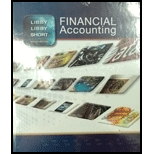
1.
Identify the amount of advertising expense for each company for the most recent year and to identify the source of this information.
1.
Explanation of Solution
The amount of advertising expense for each Company A for the most recent year is $73.1million.
The amount of advertising expense for each Company U for the most recent year is $71.7million.
This information is found from the “Advertising cost” in Appendix B.
This information is found from the “Advertising cost” in Appendix C.
2.
Compute the percentage of advertising expense to net sales ratio for most recent year for both companies and to show the higher percentage of the Company.
2.
Explanation of Solution
Compute the percentage of advertising expense to net sales ratio for most recent year:
Company A
For the year 2012:
For the year 2011:
For the year 2010:
Company U
For the year 2012:
For the year 2011:
For the year 2010:
Company U has incurred the higher percentage in all three years. Both the company has increased their advertising expense over the three-year period and also increased the advertising expense as a percentage of sales each year.
3.
Compare the percentage of advertising expense to net sales ratio for most recent year computed in requirement 2 to the industry average found in the Industry ratio report and to see whether these two companies spending more or less than their average competitor on advertising and to say the advertising strategy each company used.
3.
Explanation of Solution
Compare the percentage of advertising expense to net sales ratio for most recent year computed in requirement 2 to the industry average found in the Industry ratio report:
| Industry average | Company A | Company U | |
| Advertising/Sales | 5.55% | 2.3% | 2.9% |
Table (1)
The Company A and Company U is spending less on advertising as a percentage of sales than the average company in the industry. This might indicate that they are more effective at generating lesser sales per dollar which has been spent on advertising. Another interpretation is that they are weak in supporting their brand, and sales will eventually decrease as their brand loses its value.
4.
Explain the accounting policy for advertising for both the companies which includes note to the financial statements.
4.
Explanation of Solution
Explain the accounting policy for advertising for both the companies which includes note to the financial statements:
When the marketing campaigns become publicly available both accounting policies are similar by indicating that advertising costs are expensed. Company U capitalizes expenses associated with direct-to-consumer advertising and amortizes these expenses over the expected period of future benefits.
5.
Compute each company’s total asset turnover ratio for the three years reported and suggest about each company over time and in comparison to each other.
5.
Explanation of Solution
For Company A:
Calculation of total asset turnover for 2012:
Calculation of total asset turnover for 2011:
Calculation of total asset turnover for 2010:
For Company U:
Calculation of total asset turnover for 2012:
Calculation of total asset turnover for 2011:
Calculation of total asset turnover for 2010:
Company A and Company U has increased their total asset turnover ratios over time and by suggesting more efficient management of assets to generate revenues. In each year, Company A has a higher turnover ratio than Company U, by suggesting more efficiency in asset utilization.
6.
Compare each company’s total asset turnover ratio for the most recent year to the industry average found in the Industry ratio report and to see whether these two companies spending better or worse than their average company in the industry.
6.
Explanation of Solution
Compare the percentage of total asset turnover ratio for most recent year to the industry average found in the Industry ratio report:
| Industry average | Company A | Company U | |
| Total asset turnover ratio (for fiscal year ended 2015) | 1.750 | 1.650 | 1.530 |
Table (2)
The Company A and Company U has lower total asset turnover ratios than the average company in their industry. This suggests both companies are less effective at utilizing total assets to generate sales. This ratio is affected by growth strategies in which companies invest in additional property and equipment or other assets, but the new assets are not yet generating sales levels of established stores.
When comparing the total asset turnover ratio of Company A (1.650 times) and Company U (1.530) with the average companies (1.750) in the industry, it is evident that both the Companies A and U are less efficient in utilizing the total assets in order to generate sales. The growth strategies in which companies have invested in the plant, property and equipment or other assets affects the total asset turnover ratio. However, the new assets are still not generating the sales levels of the established stores.
Want to see more full solutions like this?
Chapter 4 Solutions
Financial Accounting - With Access

 AccountingAccountingISBN:9781337272094Author:WARREN, Carl S., Reeve, James M., Duchac, Jonathan E.Publisher:Cengage Learning,
AccountingAccountingISBN:9781337272094Author:WARREN, Carl S., Reeve, James M., Duchac, Jonathan E.Publisher:Cengage Learning, Accounting Information SystemsAccountingISBN:9781337619202Author:Hall, James A.Publisher:Cengage Learning,
Accounting Information SystemsAccountingISBN:9781337619202Author:Hall, James A.Publisher:Cengage Learning, Horngren's Cost Accounting: A Managerial Emphasis...AccountingISBN:9780134475585Author:Srikant M. Datar, Madhav V. RajanPublisher:PEARSON
Horngren's Cost Accounting: A Managerial Emphasis...AccountingISBN:9780134475585Author:Srikant M. Datar, Madhav V. RajanPublisher:PEARSON Intermediate AccountingAccountingISBN:9781259722660Author:J. David Spiceland, Mark W. Nelson, Wayne M ThomasPublisher:McGraw-Hill Education
Intermediate AccountingAccountingISBN:9781259722660Author:J. David Spiceland, Mark W. Nelson, Wayne M ThomasPublisher:McGraw-Hill Education Financial and Managerial AccountingAccountingISBN:9781259726705Author:John J Wild, Ken W. Shaw, Barbara Chiappetta Fundamental Accounting PrinciplesPublisher:McGraw-Hill Education
Financial and Managerial AccountingAccountingISBN:9781259726705Author:John J Wild, Ken W. Shaw, Barbara Chiappetta Fundamental Accounting PrinciplesPublisher:McGraw-Hill Education





